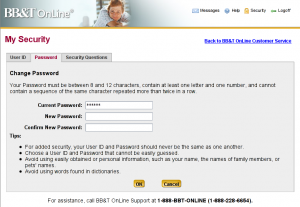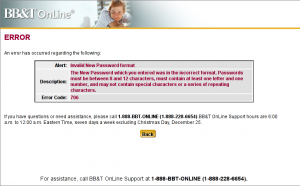I just happened to change my password recently on my online banking. I found out that Branch Banking and Trust (BB&T) limits the maximum password length to 12 characters, cannot contain any special characters like an exclamation point, and the passwords are not case sensitive. Screenshots are below of the online banking interface.

- New password screen for BBT
